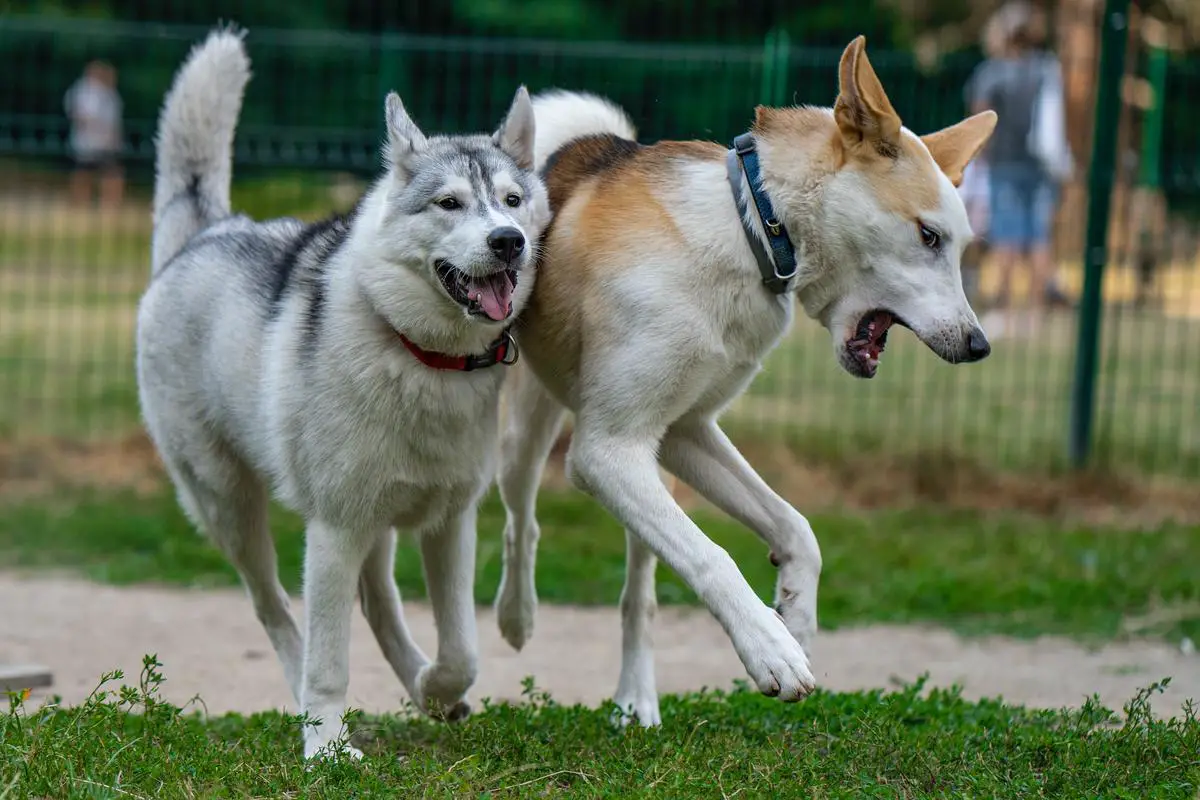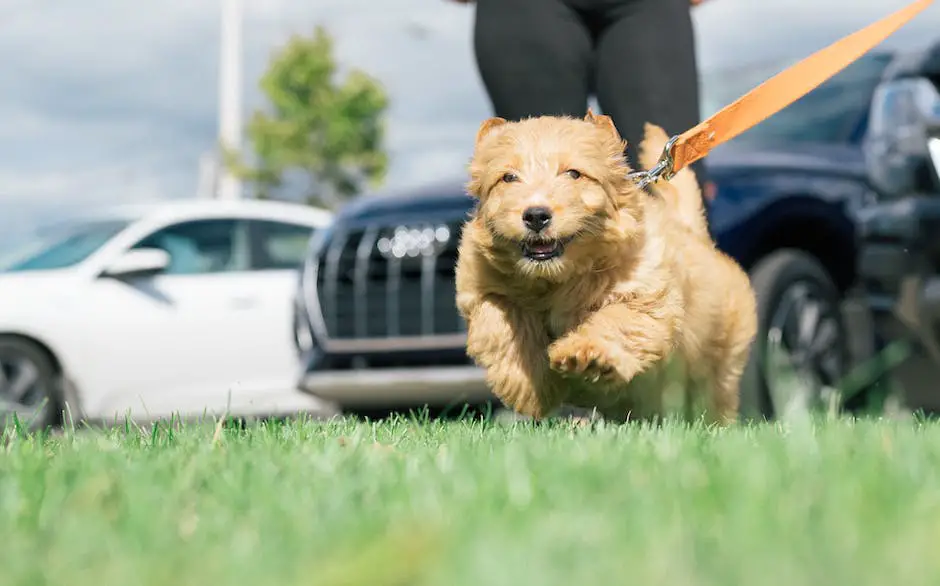Mastering Double Doodle Training: A Comprehensive Guide
The journey of effective dog training is as rewarding as it is educational. The Double Doodle, an endearing mix of Labrador Retriever and Poodle genes, is a delightful breed that offers its own unique quirks and characteristics. This unique breed requires understanding and diligent training to bring out their best traits and potential. Diving into understanding their behavior, their genetic predisposition, and their specific needs can allow owners to build a deep, lasting bond with their Double Doodle. This journey begins with basic training techniques, navigating through the importance of socialization and leash training, and effectively addressing any potential behavioral issues, thus making the adventure of dog ownership even more fulfilling.
Understanding Double Doodle Behavior
Background: An Introduction to Double Doodles
Double Doodles, known for their adorable faces and friendly demeanor, are a mix between two much-loved breeds: the Labrador Retriever and the Poodle. This hybrid breed, also referred to as Labradoodles or Goldendoodles, inherits the best of both worlds. That makes them not only intelligent and easily trainable, but also fun-loving and energetic companions.
Understanding the Labrador Retriever
Labrador Retrievers are known for their high energy level and playfulness. This breed is characterized by an insatiable desire to run, swim, and engage in a variety of physical activities. Labradors have a cheerful disposition and are known for their loyalty and protective instincts. They are also known for their intellectual capabilities which makes them easily trainable.
Appreciating the Poodle’s Traits
Poodles, on the other hand, are renowned for their intelligence and elegance. They carry a dignified air and are known to be quite trainable due to their sharp intellect. Poodles have a calm and patient disposition but can swiftly shift to playful mode when the need arises. They show a certain level of sensitivity towards their owners’ needs and are generally quite empathetic.
Temperament of Double Doodles
A Double Doodle would typically inherit characteristics from both its parent breeds. They often display a unique mix of energy, loyalty, intelligence, and empathy. As energetic dogs, Double Doodles require regular exercise to keep them healthy and content. Mental stimulation is equally important due to their high intelligence level.
They are friendly dogs that form strong bonds with their families and are good with children and other pets. Despite their energy, they are known for their gentle nature. Their trainable nature and willingness to please makes them responsive to positive reinforcement techniques.
Understanding Behavioral Traits
Double Doodles have a fairly low tendency to bark or howl, making them suitable for living in apartments or closely-packed neighborhoods. They have moderate prey drive due to the Retriever genes, which means they might chase after small animals in your yard or during walks. Consistent training can help curb this instinct.
Their social nature makes them excellent when interacting with other dogs or humans, but early socialization is recommended. With their inherited intelligence, they tend to be fairly easy to housebreak.
Double Doodles are known for their love of water, inheriting this from both their parent breeds. If you have a pool or live near a body of water, your Double Doodle will likely take every opportunity to go for a swim.
Conclusion
Gaining an understanding of your Double Doodle’s behavior is fundamental for successful training and a harmonious living environment. Their energetic and playful nature topped with their sheer intelligence makes them a joy to train and live with. Just remember that consistency, patience, and positive reinforcement are key elements in training any breed, including the delightful Double Doodle.

Basic Training Techniques
Understanding the Double Doodle Breed
The Double Doodle is an affectionate and intelligent breed, known for its friendly nature and eager-to-please attitude. This hybrid breed, often a mix between a Labrador Retriever, Poodle, and Golden Retriever, is generally amiable, making it a great companion or family pet. However, to fully harness their potential, proper training and socialization are essential.
Basic Dog Training Techniques for Double Doodles
Before starting, familiarize yourself with a few important training techniques. Positive reinforcement, for instance, means rewarding good behavior, which helps your Double Doodle associate training with pleasurable experiences. Using treats, verbal praise, or toys immediately after your dog follows a command effectively helps reinforce the behavior.
Consistency is another key element. Make sure all family members use the same commands and rules to avoid confusing your pet.
Teaching Basic Commands
1. ‘Sit’
‘Sit’ is typically the first command taught. Hold a treat close to your doodle’s nose and then move your hand upwards, enabling them to follow the treat and causing their bottom to go down. Once they’re in the sitting position, say “sit”, give them the treat, and share affection.
2. ‘Stay’
This command is vital for your dog’s safety and can be taught once ‘sit’ is mastered. Once your doodle is sitting, open your palm in front of you, say “stay”. Step back, and if they remain in place, reward them. Start increasing the distance over time.
3. ‘Come’
This command could save your dog from a dangerous situation. Put a leash and collar on your dog. Drop to your knees and say “come” while gently pulling on the leash. When they get to you, reward them with a treat and affection.
Toilet Training
Successful toilet training requires consistency and patience. Start by establishing a regular eating schedule. What goes in on a regular schedule will come out on a regular schedule.
Take your doodle outside frequently, beginning when they first wake up and then every 30 minutes to an hour. Also, take them outside after meals or when they wake from a nap. Make sure they go out last thing at night and before they’re left alone.
Ensure to praise them lavishly when they eliminate outside so they associate outdoor bathroom breaks with good experiences.
Conclusion
Training your Double Doodle should be a fun and rewarding task. With consistency, patience, and positive reinforcement, you can successfully teach basic commands and toilet training. Remember, every dog is unique, so training might take more or less time depending on your doodle’s personality and learning pace.

Socialization and Leash Training
Introduction: Importance of Socialization and Leash Training for Double Doodles
Double Doodles, like any other dog breed, need socialization and leash training to ensure they grow up to be well-rounded, adaptable, and well-behaved pets. Socialization involves exposing your Double Doodle pup to different environments, situations, and beings, while leash training teaches them how to walk properly on a leash. Both these skills are crucial for their physical safety, mental stimulation, and overall well-being.
Understanding Socialization for Double Doodles
The first few months of a Double Doodle’s life are a critical period for socialization. It is during these months that your puppy is most open to new experiences and can learn to comfortably adapt to varied environments and situations. This exposure helps shape their behavior toward new things later in life.
Steps for Socializing Your Double Doodle
- Expose Your Puppy to Different Environments: Make sure your Double Doodle is exposed to different environments, whether it be city streets, parks, or busy households. This can help them grow accustomed to varied situations and noises.
- Meet New People and Animals: Your Double Doodle should meet a variety of people of different ages, sexes, and sizes, and also interact with other dogs and animals. This can help them become comfortable around other beings and mitigate the chances of them becoming fearful or aggressive.
- Positive Reinforcement: Always reward your Double Doodle’s positive behavior with treats and praises. This encourages them to repeat the behavior.
- Take Your Time: Remember, socialization should be a gradual and patient process. Overwhelming your puppy with new experiences might result in anxiety. Pace your pet’s exposure to new situations and always make sure they’re feeling secure and confident.
Leash Training Your Double Doodle
Leash training is vital for ensuring safe and enjoyable walks with your Double Doodle. A well leash-trained dog reduces the risk of being dragged or lunged and can help prevent accidents.
Steps for Leash Training Your Double Doodle
- Introduce the Leash and Collar: Start by letting your Double Doodle wear the collar and leash around the house under supervision. This can help them adjust to the feeling.
- Start Indoors: Begin the training indoors where there are fewer distractions.
- Teach To not Pull: If your Double Doodle starts pulling on the leash, stop walking instantly. Only start walking again once the leash slackens. This can help the dog associate pulling with a halt in the walk.
- Teach Commands: Utilize commands like ‘stop’, ‘sit’, and ‘stay’ during the walk. Always reward the correct behavior with treats and praises.
- Gradually Increase the Challenge: Once your Double Doodle is comfortable walking on a leash indoors, gradually move to areas with more distractions like your backyard, then to quiet streets and eventually, busier areas.
Through patience, consistency, and positive reinforcement, your Double Doodle can be both well-socialized and well-behaved on a leash, leading to a healthier and happier lifetime partnership for both you and your pet.

Addressing Behavioral Issues
Understanding Your Double Doodle: The First Step towards Training
Before you can begin to address behavior issues with your double doodle, you must first understand them and their natural habits. Double doodles, a cross between a Labradoodle and a Goldendoodle, are known for being intelligent, friendly, and playful. However, they can exhibit unwanted behaviors such as excessive barking, chewing, and aggression, primarily when not adequately exercised or mentally stimulated.
Addressing Excessive Barking: Understanding the Cause
Excessive barking can be a symptom of various underlying issues such as anxiety, attention-seeking, boredom, or fear. The first step to address this issue is to observe your dog carefully and try to understand why they are barking excessively.
- If your double doodle barks when left alone, they could be suffering from separation anxiety.
- If they bark when you’re around but not paying attention to them, they might be trying to get your attention.
- If they bark at seemingly nothing in particular, they could be bored and in need of more mental and physical stimulation.
Managing Excessive Barking: Effective Techniques
Once you’ve understood the root cause, you can implement the following techniques:
- Distraction and Positive Reinforcement: If your doodle barks at certain triggers like the doorbell or passerby cars, redirect their attention to something more positive, like a toy or treat. Follow this up with praising or rewarding your dog when they remain calm during these instances.
- Ignoring: If your dog is barking for attention, do not give in. Instead, ignore them completely until they stop barking. Once they are quiet, you can give them the desired attention or treat.
- Exercise and Mental Stimulation: Regular and rigorous physical exercise, accompanied by puzzle toys or agility training, can help to tire out your doodle, reducing their energy level and the likelihood of barking out of boredom.
Addressing Chewing and Aggression: Adequate Socialization and Redirecting
Puppies are naturally inclined to teethe and chew on objects, but excessive chewing in adult double doodles can be a sign of boredom, or an attempt to relieve pain or anxiety. Persistent aggression, on the other hand, could stem from fear, attempt to establish dominance, or inadequate socialization.
- Redirecting: Whenever your double doodle begins to chew on an inappropriate object, redirect their attention to a dog-friendly chew toy.
- Adequate Socialization: Proper exposure to different environments, animals, and people can help your double doodle become more comfortable and less aggressive. Regular trips to dog parks or arranging play dates with other dogs can help.
- Consult a Professional: For persistent aggression, it may be beneficial to consult a professional dog trainer or behaviorist. They will be able to evaluate your double doodle and offer customized solutions.
In conclusion, consistently using these strategies will help your double doodle become a well-behaved companion. Remember, the key to effective training is patience, consistency, and love.

Embarking on the path of training and nurturing a Double Doodle fosters a wonderful connection full of unconditional love, trust, and understanding. It’s pivotally important to grasp the fundamentals of their behavioral traits, master effective methods of basic training, appreciate the importance of socialization and leash training, and find solutions to behavioral issues. With the right tools, knowledge and patience, you will not only be an efficient Double Doodle trainer but will also live a life enriched by the companionship of a well-behaved and balanced pet. This isn’t just about training a Double Doodle; it’s about understanding and growing with them in this shared journey.
